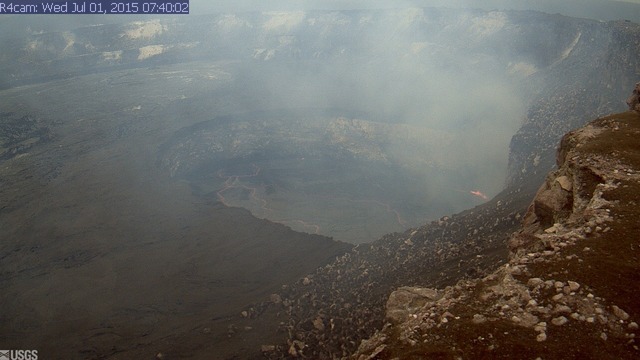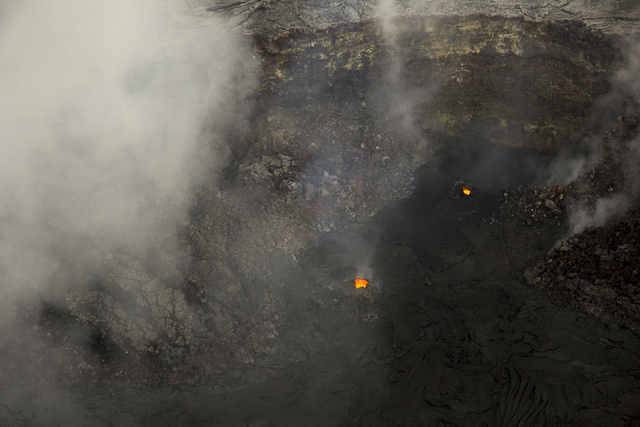Tiltmeters at the Kilauea Volcano summit continue to show neither inflation nor deflation, the U.S. Geological Survey Hawaiian Volcano Observatory reported Wednesday morning.
Tiltmeters at the Kilauea Volcano summit continue to show neither inflation nor deflation, the U.S. Geological Survey Hawaiian Volcano Observatory reported Wednesday morning.
The equipment, which measures changes in the “tilt” or angle of the ground, has held steady since about Sunday, according to the observatory. During inflation, magma rises into the summit reservoir, according to the observatory. The summit reservoir enters the deflation portion of the cycle when the magma moves laterally into a rift zone and either erupts or is stored there.
The lava lake level dropped about 15 feet during the past day and was about 155 feet below the rim of the Overlook vent within Halemaumau Crater as of Wednesday morning, scientists said. The lava lake continues to circulate and occasionally spatter, producing a gas plume during the day and glow at night.
Seismicity rates beneath Kilauea’s summit continued within background values, with some bursts in seismic tremor recorded during periods of vigorous spattering within the vent, scientists said.
Seismicity rates at the East Rift Zone also remained at normal levels, the scientist said.
During an overflight Tuesday, geologists observed two incandescent vents in the southern portion of Puu Oo crater, and a robust outgassing plume coming from the wall of a pit in the northeast section of the crater. In addition, a mostly crusted-over lava pond remains deep within a large circular pit in the west portion of the crater, which was bubbling lazily along its margin Tuesday.
At the East Rift Zone eruption site, June 27 lava flows remained active within about 5 miles northeast of Puu Oo. Scientists noted Wednesday that there was no downslope advancement between June 19 and Tuesday morning. However, moderate expansion of the flow margins was observed.
The U.S. Geological Survey Hawaiian Volcano Observatory on March 25 downgraded its alert level for Kilauea Volcano from a “warning” to a “watch.”


